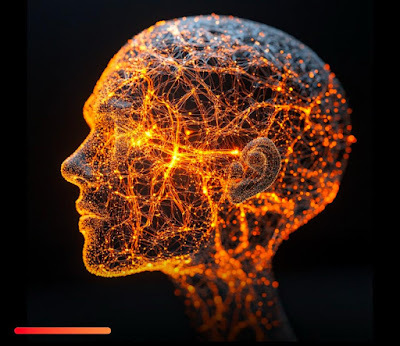Sanatana Dharma 101 – Essence & Essentials: Chapter 2: Exploring Satya, Faith (Vishwas), Nammakam (Belief) and Fact

This is Chapter 2; For Chapter 1: Click Here
It is always confusing to understand abstract concepts dealt with in various discourses on Sanatana Dharma – and insummary, we end up getting confused further. As I often say, when we do notunderstand/misinterpret a lesson – we tend to blame the subject when it is not approvedby western thought, for example – we find people around us doling outpredictions of the future; and when some of these predictions go wrong; we callAstrology is not science – it is not factual etc. Unfortunately, we blame thesubject – and in comparison, when as kids, we struggle with a certain subjectlike mathematics; we blame the teacher not the subject.
Today, we will dwell intounderstanding few important concepts that form basis to understand SanatanaDharma – and through this franchise, we will explore few important questionsand attempt to answer them.
Unfortunately, our educationsystem of today, is hardwired to believe, and is driven by evidence - and reject any other form of learning. Some ofthe phrases as students we often encounter – “hence proved”; “LHS=RHS”; burdenof proof etc. And the knowledge our ancestors passed on from generation togeneration is labelled as ancient/traditional and because it is not documented – lacks evidence.
So let us explore a question – firstquestion I was asked by my Guruvu Garu:
We learnt that there are threestates of matter – Solid, Liquid and Gas: What state of matter is fire?
I urge you to spend a minute, andnot jump onto Google; and reason an answer, if you may.
The question is to enthuse you tosee beyond western scientific dogma – It warrants a detailed answer; and Ishall reserve it for another article for later.
To understand various facets ofSanatana Dharma – it is imperative to understand concepts such as Satya, Vishwas (faith), Nammakam (belief), and Fact - each hold distinctmeanings yet are deeply interconnected within this tradition of knowledge – to fullyfathom how wisdom of Vedic texts, Upanishads, and philosophical teachingsreveal a holistic approach to knowledge, belief, and reality.
Let us explore this with anexample – we are taught in Schools: Sun rises in the East and we believe it isa fact, unfortunately, it is not completely true. What do I mean? Let’s dissect:
0. Sun exists – it is a fact; we experience it and we understand it.
1. Because we are residents of Earth, and that is our plane of sight– relative to our sphere of vision: Sun rises in the East – it is true from thecontext of Earth; Take Away: Truth has versions and our truth is valid fromEarth Perspective and is not necessarily the case elsewhere.
2. We probably never questioned this; we assume that Earth willremain the same; in relation to Sun and thus our Truth: Sun rises in the Eastalways remain – and this is faith (Vishwas)
3. Again, we probably never thought about this as well: We go to bedevery night, with a firm belief that we will see Sun the next day, rising fromthe East – that we will get up to breathe fresh air – and this is Nammakam(Belief)
Unfortunately, for every singleincident/ episode we experience in our lives – we rarely ask these fourquestions. Let us delve a little deeper, and in the process connect the dots.
I. Understanding ‘Satya’ inSanatana Dharma
1. The Concept of ‘Satya’
In Sanatana Dharma, Satyatranscends the simple definition of factual correctness. It signifies alignmentwith cosmic order (Rta) and universal reality. Satya is seen as eternal,unchanging, and inseparable from Dharma (righteous conduct).
I hope, and I am assuming so –each of us is well versed with our Epics: Ramayana and Mahabharata:
Did you explore this question: InRamayana: we celebrate King Rama as the Maryada Purushottama – our story’s centralhero figure; while in Mahabharata: we celebrate Bhagwan Shri Krishna as our story’scentral hero figure – but he is not the King in the story – who happens to be Yudhishthira– Dharma Raja – Why so?
This is because one who is anointedas the King, should and shall always pursue Dharma – an example case of "Satya";if you may. In Sanatana Dharma, Satya is not only about facts but also aboutintegrity, righteousness, and inner purity. Figures like King Rama, known asMaryada Purushottama, are celebrated for their unwavering commitment to Satya - one that is universally true.
For those of you, who seek toread more: explore “The MundakaUpanishad (3.1.6)”
II. Understanding ‘Vishwas’(Faith) in Sanatana Dharma
1. Faith as a FoundationalPrinciple
Vishwas (faith) is consideredessential for spiritual growth and self-realization in Sanatana Dharma. Unlike belief,which can be blind if you may, faith (Vishwas)is rooted in experience, trust, and wisdom.
2. The Role of Vishwas in SanatanaDharma:
• Faith in the Guru (Guru Vishwas)
• Faith in the Scriptures (ShastraVishwas)
• Faith in Divine Will (IshwaraVishwas)
Faith can be described as anintuitive force that enables seeker of knowledge to transcend doubt and connectwith deeper spiritual wisdom. If you are to achieve something, it begins with havingfaith in yourself, and how you approach a situation (Swadharma – will explorethis at length in another article soon)
Let us explore an example: InMahabharata – Bhagwan Shri Krishna delivers a profound discourse on dharma,duty, and the nature of reality to his devotee and friend, Arjuna, on the eveof the Kurukshetra war. There was another listener - Sanjaya, who had divinevision, also heard Bhagwan Krishna's teachings and relayed them toDhritarashtra. While Arjuna, through his faith in his Guru Bhagwan Krishna, understoodthe essence, and sought permission to seek Moksha – Dhritarashtra felt dejectedbecause he believed Bhagwan Krishna was preventing Arjuna from retiring, and to fulfil his duty as a warrior, by engaging in the Kurukshetra war, which Dhritarashtra expected the Kauravas to win.
Every act/incident is notreceived by each of us in a similar way; it is influenced by our faith.
III. Understanding ‘Nammakam’ (Belief) in Sanatana Dharma
1. Meaning and Origin of ‘Nammakam’
In Telugu and other Indianlanguages, Nammakam refers to belief — a deep-rooted conviction aboutspiritual, moral, or worldly matters.
2. Nammakam in Vedic Tradition
While Nammakam as a term is oftenregionally understood, it aligns closely with the concept of Shraddha in ourVedic Tradition, which signifies belief built on respect, devotion, and trust.
So Why do we trust that we willsee Sun the next day?
It is our respect towards Sun,and we are going to bed at night; believing we will see Sunrise next day. Thistradition of respect is showcased in many forms: Morning Prayers; Ratha Saptami;Surya Namaskar etc.
Every element in nature – living andnon-living is a bundle of energy (including stone) and our tradition warrantsus to respect, worship and nurture the energy – and it shall reciprocate.
Case in Point: Till date, WesternScience could not prove that Sun will rise again the next day.
IV. Understanding ‘Fact’ inSanatana Dharma
1. Defining ‘Fact’ in the DharmicContext
A Fact in Western thought isdefined as an observable reality based on evidence that can be proven. Incontrast, Sanatana Dharma emphasizes that facts must be interpreted inalignment with cosmic truth (Rta).
2. The Relationship Between Factand Truth
While facts describe observablereality, they can sometimes be misleading if disconnected from higher plane of observation.Referring back to our example – we observe that sun is rising every day, an observablereality based on evidence but till date, we do not have scientifically conclusiveproof.
In extension – Western Science relieson a process of discovery; and just because you are not able to prove anincident scientifically (as per western scientific practices) does not mean itis not true and is traditional dogma. So next time, if you are asked ourreligious beliefs baffle scientific explanations, so are just hearsay – you shouldknow the answer.
Just because western science isnot able to find evidential proof, our faith and shraddha driven knowledge is notbe discarded. We should urge western science to struggle hard to explain, what weknow is a fact from our traditional knowledge – catch up with our knowledge, ifyou may.
V. Conclusion
Sanatana Dharma provides aprofound framework for understanding truth, faith, belief, and fact. Byrecognizing the distinctions and connections between these concepts,individuals can cultivate inner clarity, moral strength, and spiritual wisdom. Satya acts as the guiding principle, faith (Vishwas) empowers theseeker, belief (Nammakam) nurtures devotion, and facts provide the foundationfor discernment. Together, they create a holistic path to self-realization anduniversal harmony.
In the words of the Rig Veda(10.190.1):
“Rtam cha satyam cha abhiddhattapaso adhyajayata”
(From cosmic order and truth wasborn the universe itself.)
By embracing this wisdom, we canlive with greater purpose, authenticity, and inner peace. So nexttime, you want to explore any event, situation and think – explore all the fouraspects we discussed – this Jignyasa will help you grow, and is the true methodfor critical thinking.
I urge you to dwell on thesethoughts. And you may read the next chapter in my next article, to know/learnmore.



